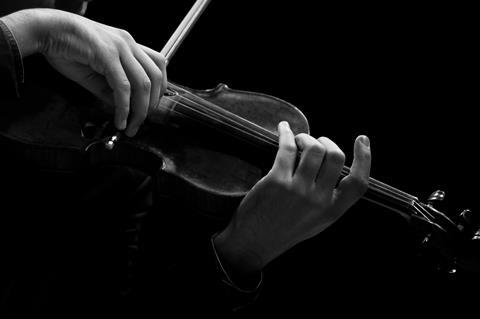Artists from The Strad’s extensive back catalogue share their insights on playing smoothly with the bow arm

Explore more Technique articles like this in The Strad Playing Hub
Legato is about vocalism - violinist Joel Smirnoff
Great players historically have understood how important the legato is. The ability to use the bow in legato forms the very basis of our technique; it influences the beginning, middle and end of every note, and the musical messages that we convey. This isn’t true only of string players: brass players move from one note to another under a slur in many different ways, and my judgement of pianists has entirely to do with legato. When I was a kid I was fascinated by the sound that wind instruments made in different styles under legato, how they moved from note to note, and how differently they might accomplish this in England, or Austria, or America.
Legato is all about vocalism: the right hand has to be a ‘rhythm machine’ while growing or receding the sound to simulate the beautiful and expressive shapes that really good vocalists are able to make naturally. In general, the only way that great singers can sing comfortably is by growing the sound constantly, by ‘supporting from the diaphragm’.
Legato requires exact wrist-and-finger-movement combinations - violinist Rebeca Nuez Suarez
Obtaining a good legato, first and foremost, can always be a challenge when copious and complex string crossings are involved. Mastering a smooth legato will require the player to come up with the exact wrist and fingers movement combination needed to achieve a clean set of string transitions within slurred passages, and the bow will need to be apportioned carefully for these transitions to happen with the appropriate speed/pressure/space ratio to generate the desired true legato effect without the occurrence of unwanted accents.
Legato requires preparation in the left hand as well as the right - violinist David Gilham
When playing string-crossings, last-minute, jerky movements of the right arm can disrupt legato and détaché passages, and a left-hand finger placed too late can lead to poor coordination with the bow. To overcome these issues, I recommend practising in double-stops to prepare the left hand, and using exercises at the frog, middle of the bow and forearm to activate the right fingers, wrist and arm. String-crossings should be beautiful, smooth and artistic, but many players neglect them in their practice and so produce unnecessary bumps in their sound.
For students struggling to play smooth string-crossings in a passage, I often write that passage out in its corresponding open strings, to give their left hand a break and allow them to focus 100 per cent on the right arm. Once we’ve worked together on all the different ways to change string in different parts of the bow, I encourage them to work on string-crossing exercises from a variety of different books daily, to keep things fresh. I also remind them to be patient, because really smooth string-crossings take time to achieve.
Don’t forget about smooth bow landings - violinist Gina McCormack
All too often students land on a note on the G string and wonder why it crunches, then land the same way on a note on the E string and look mystified that it works brilliantly. They haven’t fully explored what they need to do on each string to make the sound they want in a reliable way.
To gain greater understanding of this and to create a feeling of freedom in playing, it is important to pay attention to the role of the whole arm as a starting point, and especially to the elbow and the space around it. Often the way that gravity works means that the right-hand elbow droops, with all sorts of undesirable consequences.
Legato should serve the melody - violist Nils Mönkemeyer
The aim is to create smooth lines without accents or breaks, by keeping the arm moving in a small, continuous wave, without interruptions or corners. Big, angular or fast movements will create unwanted accents, as will pressing your fingers down on the bow when you change string.
In pieces, because string-crossings are usually random and incidental to the melody, it is important to hide them so that they don’t disrupt the music. For example, when you cross strings, be careful not to let the higher string sound louder. You want a very smooth and connected line that incorporates all the notes into the sound, without anything standing out unintentionally
Read: Technique: Melodic string-crossings with violist Nils Mönkemeyer
Explore more Technique articles like this in The Strad Playing Hub
The number one source for playing and teaching books, guides, CDs, calendars and back issues of the magazine.
In The Best of Technique you’ll discover the top playing tips of the world’s leading string players and teachers. It’s packed full of exercises for students, plus examples from the standard repertoire to show you how to integrate the technique into your playing.
The Strad’s Masterclass series brings together the finest string players with some of the greatest string works ever written. Always one of our most popular sections, Masterclass has been an invaluable aid to aspiring soloists, chamber musicians and string teachers since the 1990s.
American collector David L. Fulton amassed one of the 20th century’s finest collections of stringed instruments. This year’s calendar pays tribute to some of these priceless treasures, including Yehudi Menuhin’s celebrated ‘Lord Wilton’ Guarneri, the Carlo Bergonzi once played by Fritz Kreisler, and four instruments by Antonio Stradivari.













































No comments yet